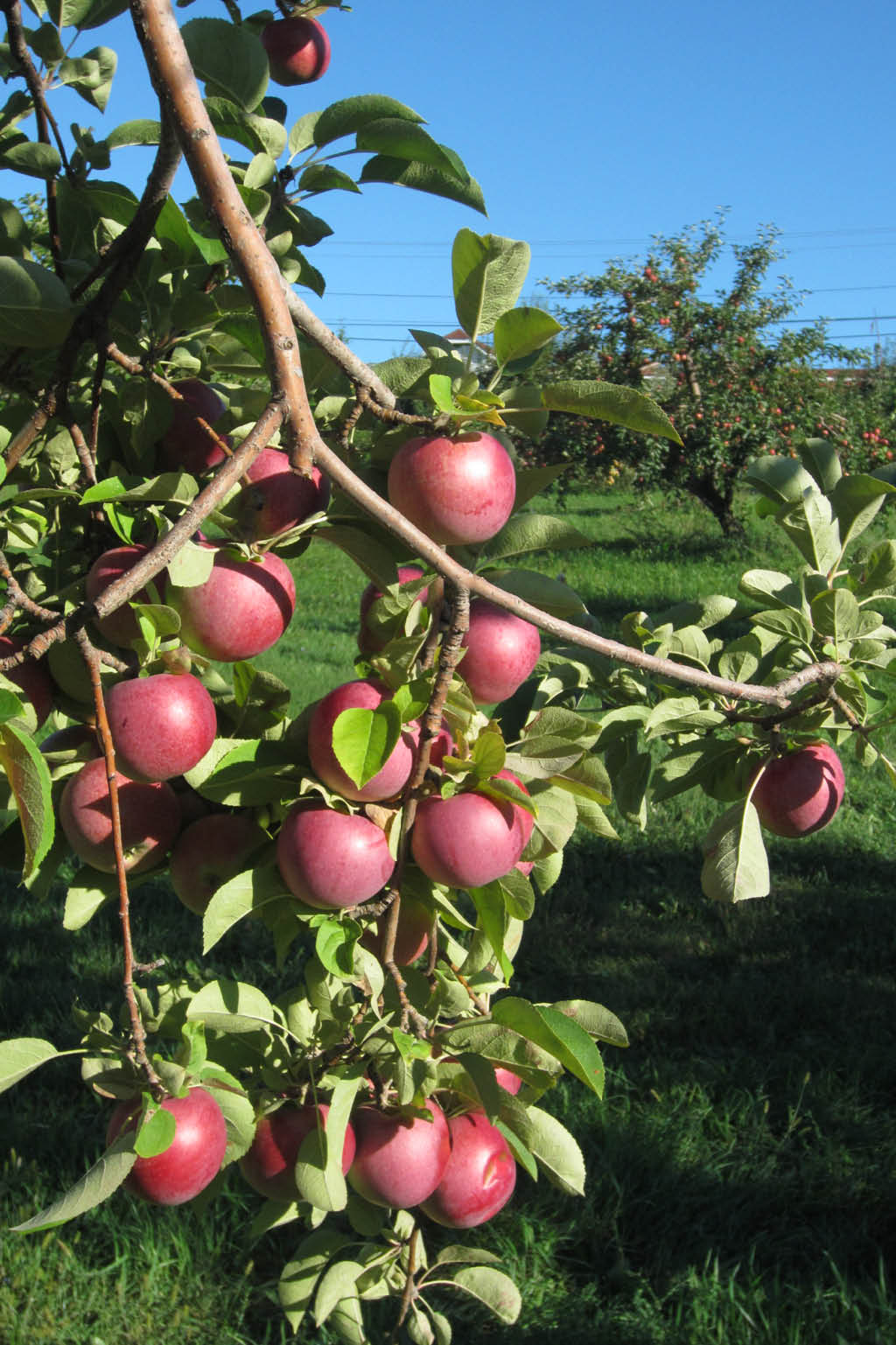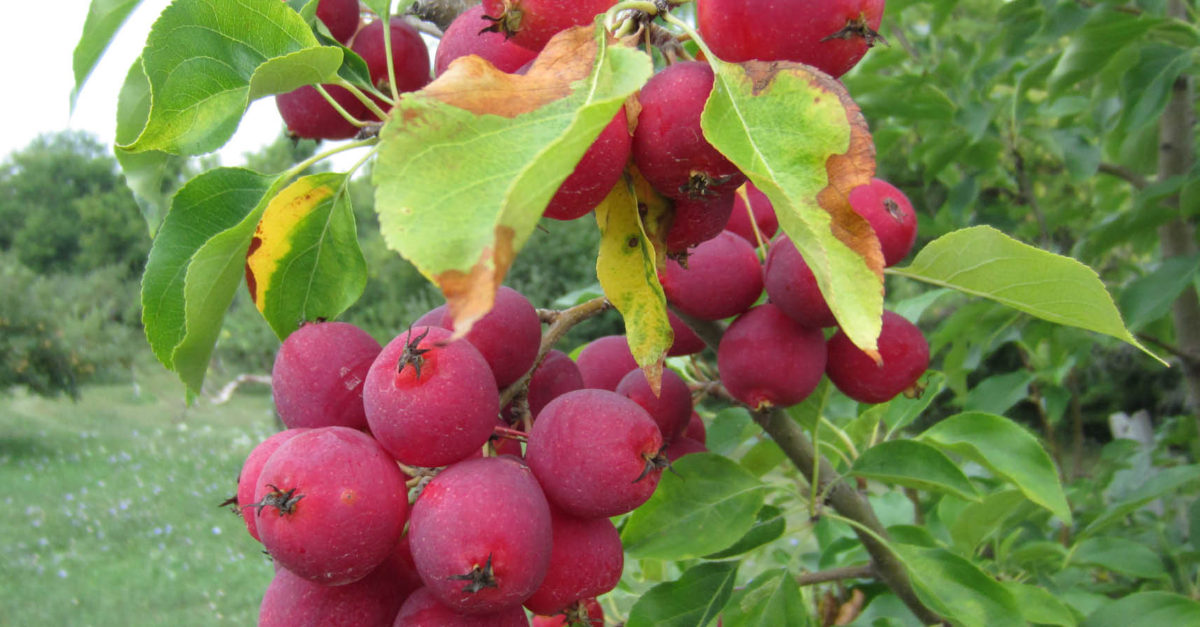Weston’s Apples O’ Many Flavors
Many people love apples, but did you know that some taste like vanilla, strawberries, bananas, and even cashews? All of these and more can be found at Weston’s Antique Apple Orchards in New Berlin, Wisconsin, which features over 150 varieties—many of which go back centuries. Orchardist Kenneth Weston gives us a slice of history as he discusses his family’s longtime business.
Tell us a little bit about the history of your orchard:
I’d be glad to. I was born in Milwaukee in 1929, and I remember my grandfather purchasing the orchard when I was five or six as a hedge against the Great Depression, but it wasn’t an orchard then; it was a dairy farm. There was a small orchard on the farm, but since my grandfather worked in an iron foundry, the basement of the barn was used to cast metals.
Eventually, my father got the idea of adding trees to the orchard with trees sent from nurseries from around the country that had specialty apples. They planted those trees, and they became the origin of the orchard that we have today. Some of the original trees are still here, so they are quite old. In addition, I was a mathematics professor for forty-two years; during my travels, I collected a number of trees, and we added another five acres to the orchard. Today, the entire farm is listed on the National Register of Historic Landscapes.
We sell the apples mainly in two markets: the West Allis Farmers Market, which is near Milwaukee, and the Dane County Farmers’ Market near the capitol building. We sell all varieties at the barn on Sundays.
Has the orchard experienced any difficult times?
Yes, and it was recently. I’ve never experienced anything like the storms we’re having lately. Back in 2012, for the first time in the history of this area, the orchard was hailed out. The hail came down so thick and so fast, it broke windows and pruned the tops of the trees and, of course, decimated the apples. It was devastating. We had a 100 percent loss. It took two years for the tops of the trees to reproduce, and a number of trees did not survive the hailstorm.
We’re also on a high hill, so we’ve always had wind, but now we have 70-mile-per-hour winds, and we’ve recently experienced continuous rain that lasted for days. The summers are getting extremely hot, too. All of this can affect the orchard.
How do you maintain such a large orchard? Do you have a lot of people working with you?
When I retired and went back to the orchard, I saw very quickly that my father, mother, and sister couldn’t care for it by themselves. They were getting along in years, so I worked very hard at giving the orchard away to different foundations. It took four years, but in 2004 my sister and I managed to donate the orchard to the city of New Berlin. Now the orchard is a city park owned by New Berlin. The city maintains the buildings, which include a machine shed, a 1902 Dutch Colonial barn, and the farmhouse. The family maintains the orchard with about twelve to fifteen volunteers.
We do have a small income from the orchard, and we pay about four pickers to pick the orchard. It takes all these people in concert to keep the orchard going, especially since it consists of these antique varieties,
which are much harder to maintain than the average apple. The modern varieties tend to be disease resistant, and they are easier to pack and ship because they don’t bruise. In contrast, we have one variety, Chenango Strawberry, that has to be picked with gloves because the skin is so tender, we could leave fingerprints.

Is there an art to growing good apples?
Yes. In fact, we teach horticulture courses. In April and May, the orchard offers three courses—in pruning, pest management control, and grafting fruit trees—and all of these are important in raising these apples. Pruning helps to open the tree up for sunlight and helps with disease control in spring. Pest management is something we have to be particularly careful about. People roam the orchard with their children, so we cannot use very harsh chemicals, especially if they are long lasting. So we have to be very careful about how we spray the orchard, and that whole technique is explained in the second course. For example, after we spray, we allow three days for the spray to disappear, so the orchard is quarantined for those three days. We do not use herbicides or anything on the grass, either. We keep it trimmed down to a lawn level. In the grafting course, we teach people the different techniques for grafting new and old trees. That course is our most popular one.
How do you feel apple growing has changed over the years?
When I was a child, my father hired a person to maintain it with essentially three chemicals: one for keeping things from crawling up the trunk, another to help with apple scab, and a third for insect control. He sprayed two or three times a year, and the apples were clean. Now we have to spray every ten days. We start in the early part of April and go through July; some orchardists spray every ten days in August. The chemicals have also changed—those old chemicals used in the ’30s would not suffice today. Some chemicals today are reasonably cheap and very powerful: they kill all insects in the orchard. We could never get away with anything like that today in a city park. So we use super mild ones, as well as other ways of controlling insects. So it’s more time consuming, but it keeps the fruit clean.
Is the soil under your orchard conducive to growing apples?
You just brought up a very important issue that people should be aware of: the soil flavors the apples. For example, Michigan has a lot of basalt soil, which is volcanic, so the apples grow large and beautiful, but the acids aren’t there to flavor the apples. Our orchard, in contrast, has a lot of limestone, and, although it’s tough to plant in this ground, it produces acids that flavor the apples. You can try an apple from basalt soil versus one from limestone soil and taste the difference.
What are your oldest apple varieties?
The orchard really is kind of a beautiful museum of old antique varieties, but thereally old ones are very interesting in their own right. A lot of the apple varieties that are imported from Europe are present, along with apples imported from around the world. America didn’t have apples as we the flavor of cashews mixed with honey. I’ve read that this apple is very popular in the Queen’s gardens in Britain as well. They’ve had parties that rate these apples, and this has been rated number one on several occasions.
What are some surprising apple flavors?
The apple is the most diverse of all the fruits. We have an apple that originally came from Oregon called the Apricot Apple, and it tastes like an apricot. And then there’s the Winter Banana, which, if you eat it raw, tastes like a fairly ordinary apple, but if you fry it, the smell of bananas is everywhere, and it has a banana like flavor. There is an apple called the Pixie Crunch that breaks into chunks in your mouth like a cookie. Each chunk is extremely succulent: it’s not sweet, it’s not sour, but it’s extremely satisfying. One of my favorites is called the King David, which has a maraschino cherry flavor to it. There’s also the Russian Raspberry, which has a raspberry taste and even looks like a giant raspberry, and another variety, Chenango Strawberry, that smells and tastes like roses. We have one couple in Chicago who buys them just for their scent. They put them in a bowl, slice them, and use the apples’ fragrance of roses.
We also have a number of wild varieties that I’ve preserved. I don’t think anyone would consider keeping these things, but I did because I thought they were quite unique. Overall, most wild varieties are not useable—they have no flavor, and they don’t cook well—but for some reason we were very lucky. We have about five different delicious wild varieties, one of which is the Lemonade Apple. You’d be fooled by the looks: it’s green and turns light yellow when it’s ripe and has a wonderful flavor. We have another one coming out that I just discovered recently. It’s a small reddish apple that doesn’t get very big, but it has a cherry-like flavor. A number of clubs and church groups visit us, and I offered this to them as a treat. They loved it—they picked the whole tree clean!

You said that one of your favorite apples is the King David. Do you have any other varieties that are personal favorites?
I have a number of them. One is the Pixie Crunch, which I can devour like candy. The Golden Russet is another one I very much like. My favorite, if you like the taste of cashews, is the Ashmead’s Kernel, which has the flavor of cashews mixed with honey. I’ve read that this apple is very popular in the Queen’s gardens in Britain as well. They’ve had parties that rate these apples, and this has been rated number one on several occasions.
Do you sell apple products like ciders?
We have a cider mill on the property. Making cider is an art form in and of itself. What most people don’t know is that different varieties produce different colors when they come off the press. For example, the Pink Pearl is pink when it first comes off the press. It’s gorgeous, as is the flavor. The Spitzenberg produces a crystal white fluid; however, the cider quickly oxidizes and turns brown. When the ciders come off the press, they go into a deep freeze; we don’t add preservatives. When it comes from the press, it’s sharp and flavorful, but after we freeze it, it becomes mellower and the flavor seems to increase. It’s the darnedest thing I’ve ever seen.
Do you ship your apples?
We ship apples all over the country. We have shipped to California and Massachusetts, for example. But we mostly sell to people in Wisconsin, Iowa, and the Chicago area.
Can people visit the orchard all year round?
It’s a city park, so there are no restrictions to when people can visit, except during spraying time (which ends at the beginning of July). Visitors have to be aware, though, that we don’t allow picking. These are not pick-your-own apples; to pick these apples requires a great deal of care.
For more info, visit westonapples.com.






















